Materials developed by CDC. Reference to specific commercial products, manufacturers, companies, or trademarks does not constitute its endorsement or recommendation by the U.S. Government, Department of Health and Human Services, Centers for Disease Control and Prevention, or Author. This material is otherwise available on the agency website for no charge.

Simply put, Biofilm is a community of many different microorganisms that adhere into a groups upon living or non-living surfaces where moisture is present. They sheath themselves within a protective coating that protects them from your pool chemicals including chlorine. Polysaccharide, Proteins, Lipids and DNA are the building blocks of cells which form these protective coatings.
Materials developed by CDC. Reference to specific commercial products, manufacturers, companies, or trademarks does not constitute its endorsement or recommendation by the U.S. Government, Department of Health and Human Services, Centers for Disease Control and Prevention, or Author. This material is otherwise available on the agency website for no charge.
These communities evolve into complicated structures when compared to relatively defenseless planktonic bacteria. Interestingly, these Biofilm cells gain a level of intelligence in that they are able to communicate with the use of cell-to-cell signaling. Due to this evolution, Biofilm’s are less vulnerable to water treatment chemicals used to maintain water balance. Within enclosed water systems as the community continues to grow detachment occurs creating a constant replenishment of bacteria and other growth medium back into your water source.
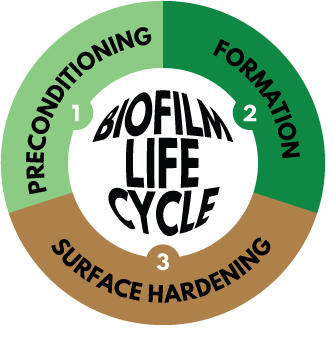
Biofilm preconditioning stage may be a slow process for pool owners who practice proper maintenance. However biofilm is inevitable given enough time. For the under maintained pool, biofilm can take hold much faster.
In the preconditioning of biofilm, bacteria may group together enough to produce the building blocks of this stage. They begin to form a slim coat which then can be transferred to surfaces within your pool. As more bacteria are captured by this coating it begins to take hold and expand to allow for the formation stage. Once the development of the initial coating builds up it will start to collect both organic and inorganic contaminants by volume. In addition to this bacteria is able to thrive under these conditions and rapidly multiply. As layers upon layers continue to form over time surface hardening occurs to the underlying layers and may become very difficult to remove. At this stage mechanical removal or good ol elbow grease may be required to ride your system of this infestation. During both the formation stage and early surface hardening stage biofilms continuously release new bacteria into the pool water creating a never ending cycle of havoc.
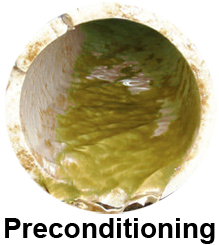
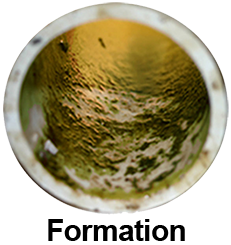
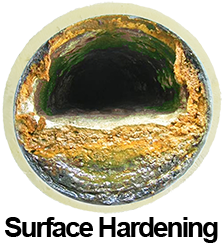
Does this look familiar? The above images show the 3 stages of biofilm within your swimming pool circulation pipes. Biofilm may attach to any surface within and near pool water (such as just above the water line).
Materials developed by CDC. Reference to specific commercial products, manufacturers, companies, or trademarks does not constitute its endorsement or recommendation by the U.S. Government, Department of Health and Human Services, Centers for Disease Control and Prevention, or Author. This material is otherwise available on the agency website for no charge.
Moisture is the key component for the formation of Biofilm’s and can be found where ever it is present. Within enclosed water systems they will not only be found on the interior enclosure but also within circulation pipes and equipment. The protection that Biofilm’s offer allows these microorganisms to live in the most extreme environments. Here are just a few examples of where you may find Biofilm communities:
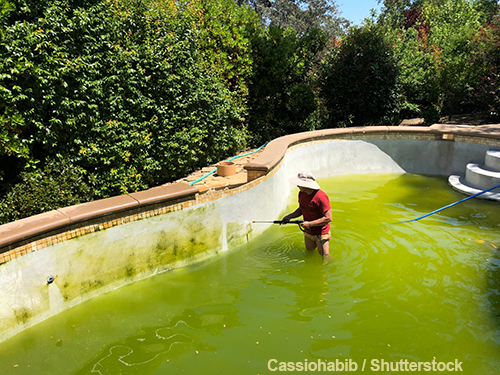
Swimming Pools are a common home for Biofilm. Even in well maintained pools, overtime biofilm will form on the surfaces within the pools circulation system and create havoc on the pool water environment to the point that the pool water is no longer managable without adding dangerous amounts of chemicals. The protected bacteria within biofilm communities rapidly multiply and continuously release more bacteria within your pool water.
Materials developed by CDC. Reference to specific commercial products, manufacturers, companies, or trademarks does not constitute its endorsement or recommendation by the U.S. Government, Department of Health and Human Services, Centers for Disease Control and Prevention, or Author. This material is otherwise available on the agency website for no charge.
Materials developed by CDC. Reference to specific commercial products, manufacturers, companies, or trademarks does not constitute its endorsement or recommendation by the U.S. Government, Department of Health and Human Services, or Centers for Disease Control and Prevention. This material is otherwise available on the agency website for no charge.